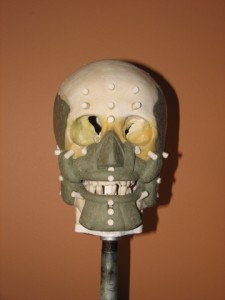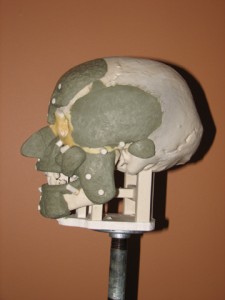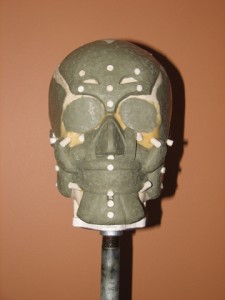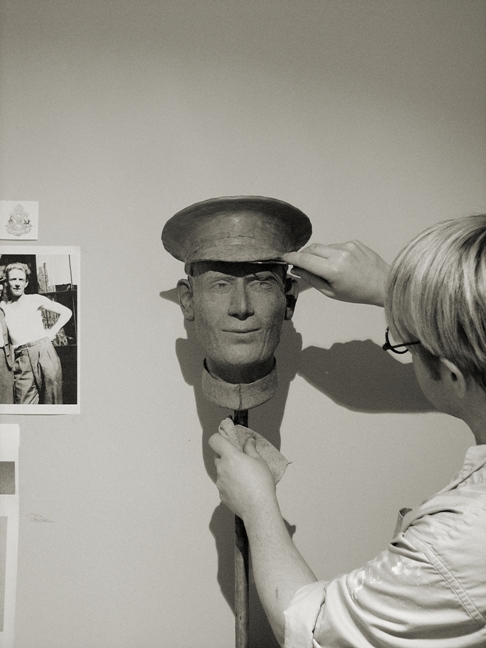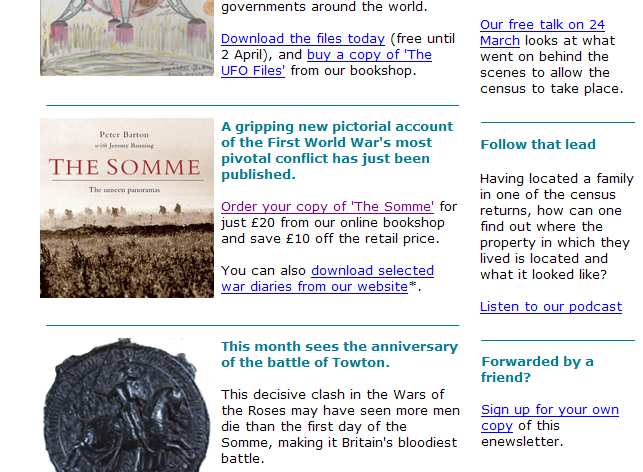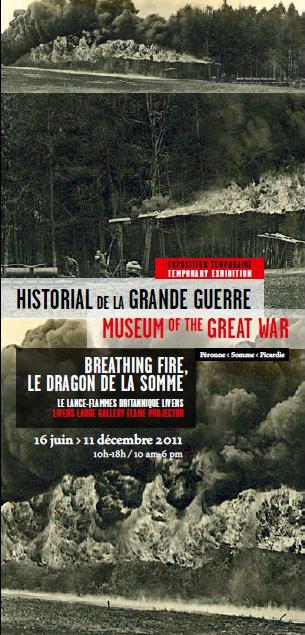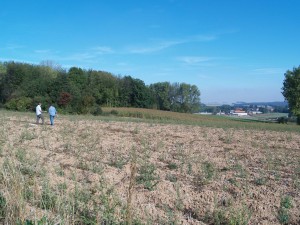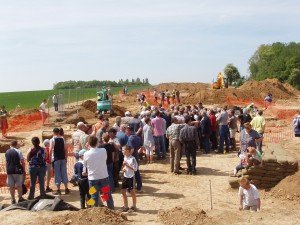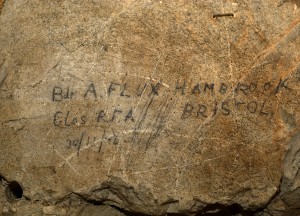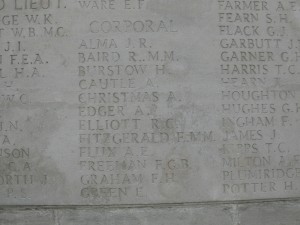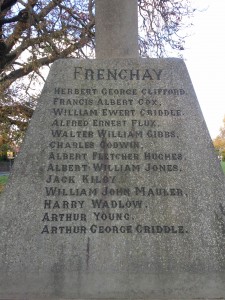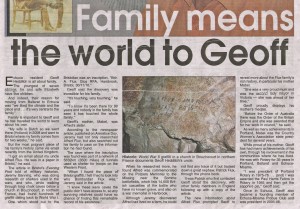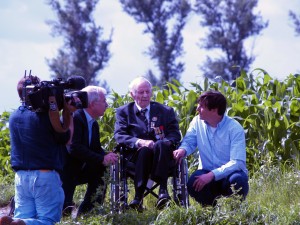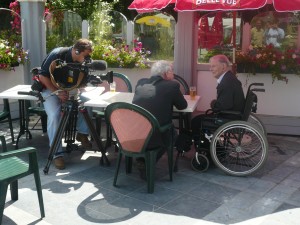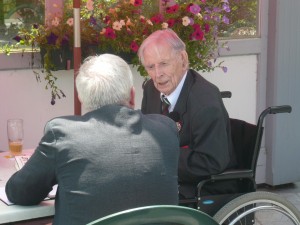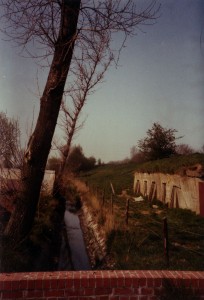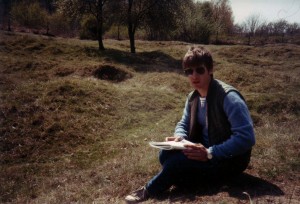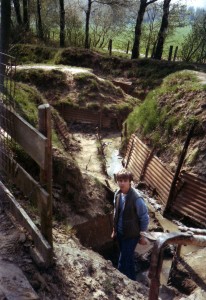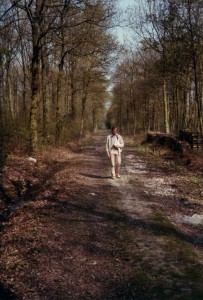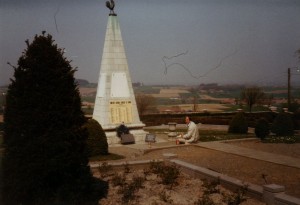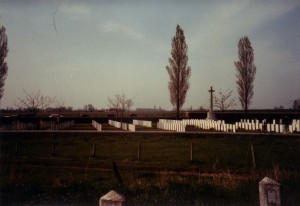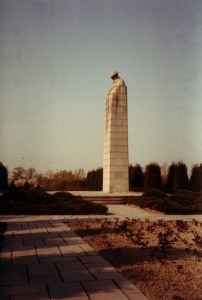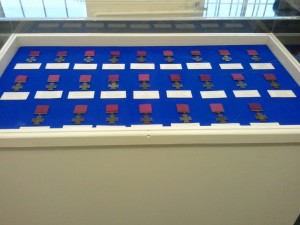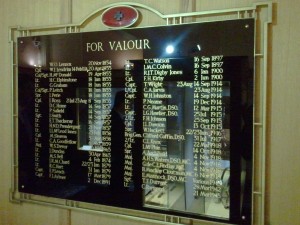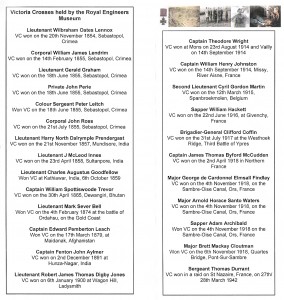Archive for the ‘Miscellany’ Category
Private Thomas Lawless – new photos of the facial reconstruction work and his burial service at La Chaudiere Military Cemetery
I was contacted by the Canadian Portrait Academy (CPA) when I first wrote a blog entry on the positive identification of Thomas Lawless. I initially saw news of this via my Twitter feed and realised what a good news story it was. I like to keep tabs on ‘news from the front’ and knew that this story fitted the bill perfectly. Little did I know the interest it would generate. Since that first post I have been heartened by the enthusiasm and generosity of those involved in the process to share their time and material so willingly.
The CPA have been wonderful in keeping me up to date with events and, through them, I have made contact with Christian Corbet, the sculptor who worked as the Forensic Artist with the Department of National Defence and others to reconstruct a likeness of Thomas Lawless.
Mr Corbet has kindly agreed to let me post images of his work on the facial reconstruction process. These photos are copyright and reproduced by kind permission of Christian Corbet. They show a few of the stages in the reconstruction process and are clear evidence of the levels of technical quality employed.
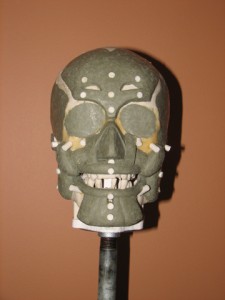
Facial reconstruction of Thomas Lawless 4 - muscles are placed on the skull, Copyright by Permission of Christian Corbet
The facial reconstruction procedure was the initial stage in the identification process and the end result (the sculpture) was used by Dr Andrew Nelson of the University of Western Ontario for computer superimpositions in order to identify the subject. Dr Nelson began his work on this particular identification process in 2007. The condition of the remains meant that Dr Nelson reconstructed the bony part of the midface in epoxy resin and a computer model of the skull was then made. A three dimensional print using bone fragments and photographic superimposition (for the midface) was then created.
This gave Christian Corbet the base to work from for a forensic reconstruction of the face (as shown in the photographs). The team had photos of all the proposed subjects and so a comparison could be made between the sculpture and photos. By eliminating those whose facial characteristics did not match, the shortlist was reduced to two soldiers – one from Cape Breton and the other from Ireland. It was at this stage that that Dr. Nelson suggested isotope analysis – the method by which the Irishman, Thomas Lawless was eventually identified. As Christian Corbet wrote to me, this multidisciplinary collaborative project is said to be a first of its kind in identifying a soldier of the Great War. I think that it is the model for future studies and shows what can be done with available resources, time and skilled personnel.
Mr Corbet’s protégé Benjamin Trickett Mercer told me that the 3-dimensional sculpture of Thomas Lawless took approximately 5 days to complete. It is estimated that approximately 25 – 30 hours were spent on finishing the formal portrait. Help regarding the accoutrements of a Great War soldier were provided by the costume department of the Canadian War Museum. This ensured that the correct regimental badges could be sculpted. They even assisted in the providing the essential but easily overlooked measurements for the size of the soft cap.
Burial – 15 March 2011
Mr Corbet and Benjamin Trickett Mercer attended the burial service on 15 March 2011. Mr Corbet had the honour to place flowers on the grave of Thomas Lawless on behalf of the Province of Newfoundland and Labrador.
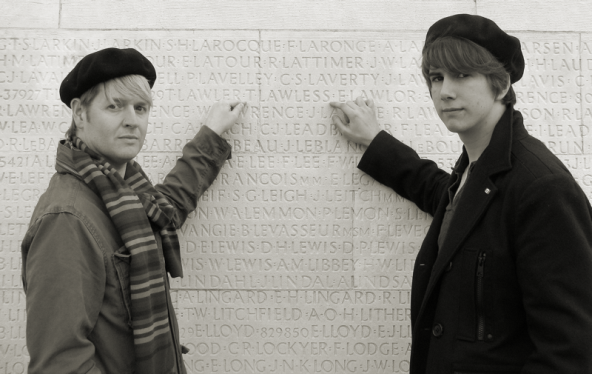
Christian Corbet and his protégé Benjamin Trickett Mercer pointing to the name of Thomas Lawless at the Vimy Memorial. Copyright by Permission of Christian Corbet
On the same note, I received a Press Release earlier from the CPA. It is shown below in italics along with the photograph.
Newfoundland and Labrador Presents Floral Tribute to Fallen WWI Soldier
Avion, France – In an act of respect the province of Newfoundland and Labrador paid homage with a floral bouquet at the burial of Pte. Thomas Lawless on 15th March in Avion, France.
Premier Dunderdale granted permission to Christian Corbet an Academician of the Canadian Portrait Academy to lay flowers of white lilies and red roses upon the grave of Pte. Lawless. Pte. Lawless’ fought at the Battle of Vimy Ridge and his identity was recently released after he went missing in action in June 1917.
This floral tribute was the only one presented from a province or territory from Canada.
Christian Corbet who worked as the Forensic Artist with the Department of National Defence among other institutions in order help identify the remains of the World War I soldier stated “This bouquet of flowers was Newfoundland and Labradors way of saying “Thank You for laying your life down for the freedom we so often take for grated today.” The Irish descendants of Pte. Thomas Lawless were greatly appreciative and grateful for such a kind gesture.”

Christian Corbet presented a floral tribute to fallen WWI soldier on behalf of the Province of Newfoundland and Labrador at La Chaudiere Military Cemetery, France. Photo Credit: Benjamin Trickett Mercer, CPA.
For more information on the burial: http://www.cmp-cpm.forces.gc.ca/dhh-dhp/adh-sdh/news-nouvelle-eng.asp
Please find below some more photos of the burial service, courtesy of Christian Corbet.
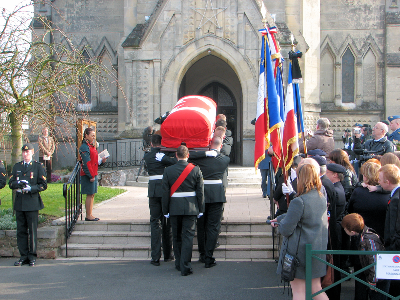
The coffin of Thomas Lawless is carried into the church of Saint-Martin de Vimy. Copyright by Permission of Christian Corbet

Canadian armed forces and standard bearers at the funeral service of Thomas Lawless. Copyright by Permission of Christian Corbet

Thomas Lawless's coffin is carried to his grave at La Chaudiere Military Cemetery, Vimy. Copyright by Permission of Christian Corbet
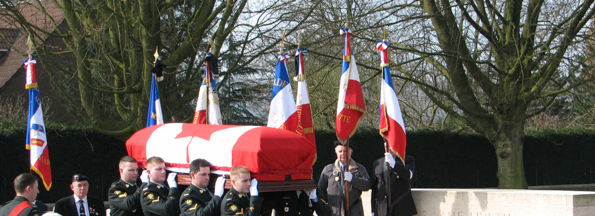
Thomas Lawless's coffin is carried past French standard bearers. Copyright by Permission of Christian Corbet
I would welcome any comments you have on the subject.
Today saw the burial of Private Thomas purchase tramadol generic ultram Lawless, 49th Battalion, Canadian Expeditionary Force almost 94 years after he was killed in action. He was buried with full military honours at La Chaudière Military Cemetery in Vimy with members of his family in attendance.

Burial of Private Thomas Lawless, 49th Battalion, CEF at La Chaudière Military Cemetery, Vimy on 15 March 2011
The remains of Private Lawless and Private Herbert Peterson were found by construction workers near Avion in 2003. They had been killed in August 1917. Subsequent forensic procedures identified Peterson in 2007. The positive identification of Lawless was announced last month – see my blog post: Remains of Canadian Great War soldier finally identified – Private Thomas Lawless, 49th Battalion CEF.
Some pictures of today’s ceremony from the Calgary Sun website can be viewed by clicking on: WWI soldier buried in France.
The pictures on this blog post were taken by a friend who attended today’s burial service. I was unable to make it to Vimy and so offer my thanks to Isabelle Pilarowksi for permission to use her photographs.
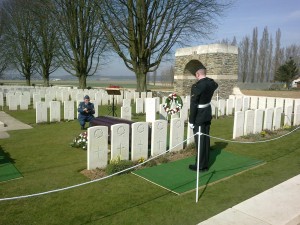
Burial of Private Thomas Lawless, 49th Battalion, CEF at La Chaudière Military Cemetery, Vimy on 15 March 2011
I will be posting some pictures soon from Christian Corbet, the renowned Canadian sculptor of his work on the facial forensic reconstruction of Lawless’s face. Mr Corbet has been kind enough to supply these for my site. Please see this post for the pictures.
The Department of National Defence announced the news of today’s burial here. A full transcript of that announcement can be found below in italics.
PAS-DE-CALAIS, France – Nearly a century after his death, Private Thomas Lawless, a Canadian First World War soldier whose remains were recovered and identified on January 10, 2011, was buried today with full military honours at La Chaudière Military Cemetery, in Vimy, France.
“The courage and dedication of our Canadian First World War heroes will never be forgotten,” said the Honourable Peter MacKay, Minister of National Defence. “After all these years, we finally recognize Private Thomas Lawless with the honour and dignity he so greatly deserves.”
Private Lawless was born on April 11, 1889, in Dublin, Ireland, and enlisted with the Canadian Expeditionary Force (CEF) in Calgary, Alberta. He was a member of the 49th Battalion, CEF, who fought in the Battle of Vimy Ridge.
Veterans Affairs Canada has provided support to the family members of Private Lawless and has also coordinated their participation in the interment ceremony.
“It is very gratifying that we can properly lay to rest a Canadian who made the ultimate sacrifice for our country and our way of life,” said Honourable Jean-Pierre Blackburn, Minister of Veterans Affairs and Minister of State (Agriculture). “We are now able to share Private Lawless’s full story of courage with other Canadians and assure his family that we will remember him.”
In October 2003, two sets of human remains were found at a construction site in the vicinity of Vimy Ridge, France. The first soldier was identified in February 2007, as Private Herbert Peterson of Berry Creek, Alberta. On January 10, 2011, Private Lawless’ remains were identified by the Casualty Identification section of the Directorate of History and Heritage after a combination of anthropological, historical and biological research such as generic testing, osteology, facial reconstruction and military historic records were conclusive.
Commemorative Service to be held at Memorial Wall, Wellington Quarry, Arras at 6.30 am, 9 April 2011
Calling all Western Front visitors!
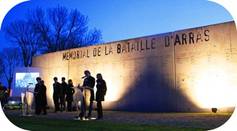 With so much emphasis on the 1 July commemorations on the Somme and the mass pilgrimage that takes place every year, this buy ambien sleeping tablets year please spare a thought for the men who fought in the 1917 Battle of Arras. It was the most savage infantry offensive of the war with the highest daily rate of casualties – over 4,000 men per day. The campaign started with enormous success on Easter Monday, 9 April 1917 with the greatest advance of the war to date but ended in disillusionment and utter exhaustion 39 days later in the fields around Oppy, Roeux, Monchy-le-Preux and Cherisy. Arras is by far my favourite place to visit – there is something about it that I just can’t get enough of and even when driving down to the Somme for a tour, recce or meeting I feel a slight wistfulness as I pass the Vimy Memorial, the grain silos at Roeux, so close to the site of the dreaded Chemical Works and the spire of Monchy church with Monchy British Cemetery in the foreground.
With so much emphasis on the 1 July commemorations on the Somme and the mass pilgrimage that takes place every year, this buy ambien sleeping tablets year please spare a thought for the men who fought in the 1917 Battle of Arras. It was the most savage infantry offensive of the war with the highest daily rate of casualties – over 4,000 men per day. The campaign started with enormous success on Easter Monday, 9 April 1917 with the greatest advance of the war to date but ended in disillusionment and utter exhaustion 39 days later in the fields around Oppy, Roeux, Monchy-le-Preux and Cherisy. Arras is by far my favourite place to visit – there is something about it that I just can’t get enough of and even when driving down to the Somme for a tour, recce or meeting I feel a slight wistfulness as I pass the Vimy Memorial, the grain silos at Roeux, so close to the site of the dreaded Chemical Works and the spire of Monchy church with Monchy British Cemetery in the foreground.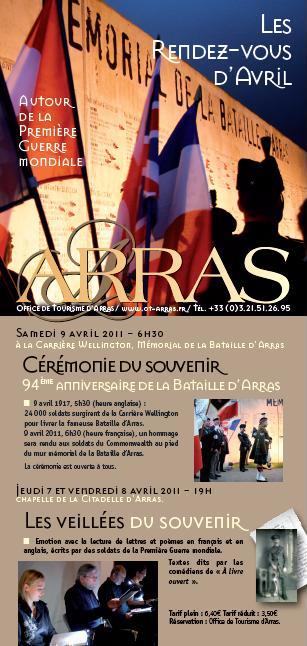
I have just received details of the annual commemorative service to be held at the Wellington Quarry, Arras on Saturday 9 April 2011 at 0630hrs (local time). This service, held on the 94th anniversary of the start of battle is held at the Memorial Wall – if you come into the car park from the Beaurains road then you won’t miss it. The ceremony is open to all.
Sadly, owing to work and family commitments I will not be able to make it this year but have passed my apologies on to Isabelle Pilarowski and her colleagues. I know that the organisers like to use extracts from soldiers who actually took place in the battle and, having given Isabelle a copy of the 1000 page memoir of Percy Clare, 7th East Surrey Regiment, she has promised that she will be using his superb descriptions of battle during the service. Percy’s memoirs were used extensively in the Arras panorama book – from his descriptions of pre-battle training, through the 9 April attack and subsequent days spent between Arras and the fields below Monchy ending with the fateful 3 May attacks – a very black day for the Third Army.
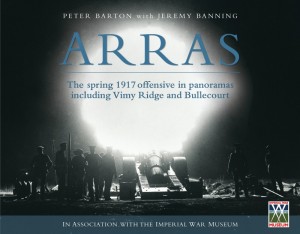 As a way of thanking the copyright holders we gave them a highly personalised tour of the Arras battlefield (following the 7th East Surreys) when they came over in November 2010 to listen to our lecture in French. More details can be found by reading the blog post here: Arras – battlefield tour & lecture: 12 November 2010
As a way of thanking the copyright holders we gave them a highly personalised tour of the Arras battlefield (following the 7th East Surreys) when they came over in November 2010 to listen to our lecture in French. More details can be found by reading the blog post here: Arras – battlefield tour & lecture: 12 November 2010
A two-sided pdf file with more details on April’s events is available on request – please contact me here and I will email you a copy.
These events include guided walks & tours (French speaking only) in Neuville-St-Vaast, Roeux and Arras itself and seem very good value at just €3.00 per person.
I will certainly have the men of the Third Army in my memories on the morning of 9 April and would urge anyone over on a battlefield tour at that time to attend and pay their respects.
Following the three week archaeological dig at Mametz last May I am pleased to report that a new exhibition is to open at the Historial, Peronne from 16 June 2011.
Below is the text from the flyer that has been produced. If you are on the Somme from June – December then please do visit the Historial for the chance to see this exhibition.
An exhibition that tells for the first time the story behind the Livens Large Gallery Flame Projector. Employed only ten times during the war – nine of which were on the Somme. The machine was 19 metres long, 40 centimetres wide, and weighed 2.5 tonnes. It was deployed from a tunnel beneath No Man’s Land by a specially-trained crew of seven, and fired a jet of flaming oil 100 metres long over the German trenches: the strangest, rarest and most horrifying weapon of the Great War.
In May 2010 historians and archaeologists excavated a section of the British trenches near the village of Mametz in search of the remains of a Flame Projector believed to have been buy cheap tramadol 100mg abandoned underground in late June 1916, just before the Battle of the Somme. The results were extraordinary, and for the first time for almost 100 years some of the original parts found in 2010 can be viewed alongside a specially-commissioned replica constructed by local students of vocational training centres.
A special screening of the film “Breathing Fire – Le Dragon de la Somme” will be shown at the opening of the exhibition, 16 June at 6pm.
 A downloadable version of this flyer in pdf is available by clicking on the link below. Please feel free to disemminate this information to all your friends and battlefield visitors. It promises to be a terrific exhibition and for many will be the first chance to see parts of the Livens Flame Projector, buried in the Somme mud for 94 years.
A downloadable version of this flyer in pdf is available by clicking on the link below. Please feel free to disemminate this information to all your friends and battlefield visitors. It promises to be a terrific exhibition and for many will be the first chance to see parts of the Livens Flame Projector, buried in the Somme mud for 94 years.
Breathing Fire – Le Dragon de la Somme exhibition
Exact date of transmission of the version for UK television still to be determined. I will post this when I find out the date from the production company.
I use the tools supplied by WordPress and Google Analytics to follow how visitors reach my site. I am seeing a large number of visitors searching for details on the archaeological dig and accompanying television documentary programme that followed our search for any surviving pieces of a Livens Large Gallery Flame Projector at Mametz in May 2010. As the site was open to visitors and there was no ban on photos I don’t think it is breaking any great secret to reveal that we DID find pieces of this amazing weapon. It was 19 metres long, 40 centimetres wide and weighed 2.5 tonnes. Its specialised team of seven ensured it fired three ten second bursts of flame for up to 100 metres and, perhaps most remarkably, this was fired from a tunnel or ‘Russian Sap’ dug specially under No Man’s Land.
At present (14 February) there is no broadcast date available for the UK or North American market. In the UK the programme will be broadcast as a Channel 4 Time to order tramadol Team Special. As soon as I know the broadcast date I will post the details so please check back or follow me on Twitter to be kept up to date.
In the meantime, a couple of pictures.
Update – 13 April 2011.
The Time Team Special will be shown on Channel 4 at 9pm on 14 April. A detailed description of the birth, evolution and structure of the project along with maps and images is now available here:
I have been researching certain members of this family after I spotted some graffiti of a Great War soldier, Bombardier Alfred Flux from Hambrook, whilst exploring caves under the church in Bouzincourt on the Somme in May last year. Whilst the caves were covered in graffiti from soldiers from all over the world I was intrigued by this local man and endeavoured to find out more about him.
Full details of this can be found on the newspaper link below as the story was featured in the Armistice Day editions of the Bristol Evening Post, Western Daily Press and Bath Chronicle.
Alfred Flux
832011 Corporal Alfred Ernest Flux, serving with “Y” 61st Trench Mortar Battery, Royal Field Artillery was killed on 21 March 1918, aged 25. He was the son of Alfred William and Emily Flux, of Walton Farm, Hambrook, Bristol and is commemorated on the Pozières Memorial to the Missing.
Alfred had served in 1916 in the Laventie area with involvement in the Battle of Fromelles on 19/20 July 1916 and stayed in this sector until his Division moved south to the Somme in mid-November 1916. The war diary says they were billeted in caves under Bouzincourt Church on 28 November and the graffiti is dated 30 November. The Battery stayed at Bouzincourt until January 1917 and then they went back for rest. February 1917 saw a move to Harbonnieres, south of the River Somme until May 1917. By June 1917 the battery was near Arras and then moved up to the Ypres sector where they were employed as stretcher bearers for the 38th (Welsh) Division in the Canal Bank sector on the first say of the Third Battle of Ypres (Passchendaele). They stayed in the salient until September when they moved back down to the Arras front, holding the dreaded Chemical Works and Greenland Hill sectors for the next two and half months. They then moved down to the Somme area and in January 1918 were ensconced in the Holnon Wood sector west of St Quentin. It was whilst holding these positions against the German Spring Offensive on 21 March 1918 that Alfred Flux was killed.
Since the article being released I have been in further touch with members of the Flux family, notably Judith Pike (who lives in Bristol) and Geoff Hedditch from Echuca, Victoria in Australia. I had done a fair bit of research into the family so knew that Alfred was one of a family of five children but Judith explained that Alfred’s younger brother, Francis Charles (but known as Charlie until his death at the ripe old age of 86 years) had also served as an artilleryman in the Great War. I volunteered to find out as much of his service as I could and was able to produce a detailed report for the family. Luckily, Charlie’s service record had survived and so I could piece together his service with 47 Brigade, RFA and then various Trench Mortar Batteries of the 19th Division. Other than suffering from dysentery in 1915 he appears to have been unwounded and was demobbed in February 1919.
I was both amazed and delighted by the huge amount of detail you have unearthed. Your information has opened up that era in a fascinating way I never expected to happen. I would like to say a big thank you for your diligence in researching my grandfather, and of course, initially finding out so much about his brother Alfred. Thank you for all you have done to bring real colour into our family history, and I want to wish you every success with your work as a researcher of the Great War. Judith Pike, Frenchay, Bristol
I was delighted to receive some post this morning from Geoff Hedditch in Australia. Enclosed in the envelope was a copy of his local newspaper, the Riverine Herald, which included an article about Geoff and his delight at the work I had done. I would like to thank Patrick, Judith and Geoff (all members of the Flux family) and Alan Freke and his fine colleagues at Frenchay Village Museum for their help. It just goes to show what a spark of interest coupled with a bit of determination can achieve – quite amazing that this story could travel all the way to Australia.
Please also remember the Flux boys themselves – Alfred and Charlie – who both answered their country’s call when needed and who, for one, paid the ultimate price.
Not really Great War related but I was very saddened to hear of the death of Brian Hanrahan at the age of 61 from cancer. I always thought him a quality journalist and well remember his reporting of the Falklands conflict. I met him in July 2007 when he led a BBC team that followed Harry Patch on one of his pilgrimages back to Ypres. Brian seemed a really nice guy, genuinely interested in Harry and the visit. You can tell with many journalists that it is ‘just a story’. On that 2007 trip it was clear that Brian certainly realised it was more than a story and acknowledged how lucky he was to have such unfettered access to Harry on his time in and around the Ypres Salient. He was a real gentleman, was never pushy with his requests and was quite happy to just follow us on our usual pilgrimage sites. The footage from his team’s visit is available on YouTube here but, sadly, this is the BBC West version so it doesn’t have Brian’s commentary.
Some photos of him interviewing Harry on the Passchendaele battlefield and then relaxing at John Vandewalle’s wonderful De Dreve café at Polygon Wood. It was during this interview, literally over a beer, that I saw Harry at his most relaxed. This was, in no small part, down to the skill of the interviewer. Great memories for us who were there and very sad to think that both men have now died.
I have been sent some photos of a trip to the Ypres battlefields made in 1984. I was still in the second year of secondary school at this point so didn’t go along – the two intrepid travellers were my father and eldest brother, Mark (http://www.mgbtours.com/). For the both of them this was their first trip to any Great War battlefield. I am glad to say that it was certainly not their last – my father regularly visits both Ypres and the Somme with the rest of the Banning family and also with the wonderful Genesta Battlefield Club. As for Mark, he now spends his time as a full-time battlefield guide (and highly recommended he is too) so it is clear that this 1984 pilgrimage was the first of many visits to the hallowed ground of the Ypres salient.
These pictures, taken in the pre-digital era, have been scanned and tidied up by me. Ignoring the questionable fashions on display they show fascinating details of many oft-visited places around the immortal salient – all without the coaches of visitors that often accompany some of these spots nowadays.
Of particular interest are the shots of the Advanced Dressing Station on the banks of the Ieper-Ijser canal at Essex Farm Cemetery which show the site before its restoration in the 1990s. Modern shots can be seen by visiting this site. Visitors to the area can you buy ambien mexico will know of its association with John McCrae, author of ‘In Flanders Fields’.
Also worth noting are the low trees at the Brooding Soldier Memorial at Vancouver Corner. It is amazing how the horticulture and the inexorable work of nature has such an effect on the way a particular spot looks. It was this site that held their main interest as they remembered my grandfather, Private Seymour Henry Banning, 13th Battalion, CEF (Royal Highlanders of Canada) who was gassed and taken POW very close to the spot on or around 22 April 1915 – one of the first men ever to have been gassed in warfare.
Click on the pictures to see them at full size.
Many thanks to my brother Mark Banning for these photos.
I was lucky enough to be invited to the launch of the new Victoria Cross Gallery at the Royal Engineers Museum on 11 November. The exhibition opened to the public on 12 November but, along with about a hundred others, got a sneak preview. The exhibition celebrates the twenty five Victoria Crosses that the Museum holds as well as giving details for a further thirty RE VCs not in the museum collection. BBC Kent covered this story HERE.
Prior to the opening we were all lucky enough to see the ORIGINAL Victoria Crosses in a display box – I was informed that a cost estimate for the box was about £10 million.
It was terrific to see medals – from some of the earliest medal from the Crimean War, Boer War (Lieutenant Digby Jones who was the first man to be awarded the VC posthumously) through to the Second World War and that of Sergeant Thomas Durrant, awarded posthumously following his actions in the St Nazaire raid of 1942; his bravery was so great his captors insisted he receive a bravery award.
However, it was the Great War VCs that I had really come to see and I was not disappointed. Amongst those on display along with unseen archival material, personal items, and weaponry were the three Royal Engineers whose VC action was on the same day – 4 November 1918 when crossing the Sambre-Oise canal; Sapper Adam Archibald VC, 218 Field Company, Major George de Cardonnel Elmsall Findlay VC, MC & Bar, 409 (Lowland) Field Company and Major Arnold Horace Santo Waters VC, 218 Field Company.
Major James McCudden, Gillingham’s own VC recipient, whose medals are on display alongside those of his two brothers (who sadly both also died in WW1) and his father’s (who died shortly after WW1).
My main interest was to see an addition to the museum’s collection of the story of Sapper William Hackett. I had tracked down descendants of Thomas Collins, the man Willam Hackett refused to leave under the fields of Givenchy-lès-la-Bassée in June 1916. This BBC Wales news item shows the picture of Thomas that hung over his mother’s fireplace until her death. It had been arranged between the family descendants and the RE Museum that this picture would go to the museum – after all, Collins is instrumental to the Hackett’s VC action. I was delighted to see Terry Carroll there, nephew of Thomas Collins, who I had met at the Tunnellers Memorial unveiling in June. He was delighted and understandably moved to see the picture of Uncle Tommy, a picture he knew so well from his childhood, restored, cleaned and hanging in such illustrious company in the RE Museum.
There is a Remembrance book in the Medals room, specifically for people to record their memories of members of their family who have served in the armed forces. The exhibition is now open to all visitors – it is highly recommended. Well done to the museum staff who have done such a fine job with this exhibition. The braveryof the men who earned these awards is, as ever, staggering.
The museum can be found on Prince Arthur Road, Gillingham, Kent, ME4 4UG. Telephone 01634 822839 or website www.remuseum.org.uk

